6172RB Science a STEM approach Year 2 low res watermark
Create successful ePaper yourself
Turn your PDF publications into a flip-book with our unique Google optimized e-Paper software.
Lesson 4<br />
Chemical sciences<br />
LIVING IN A MATERIAL WORLD<br />
Lesson plan<br />
Introduction:<br />
1. As a class, revise materials and their properties by completing the Everyday materials quiz at<br />
. QP PC C<br />
Development:<br />
2. At the front of the class, display items such as a rubber ball, football, soccer ball, Lego® blocks, toy<br />
cars, trucks, play kitchen equipment, plush animals, dolls and toy prams. What materials are theses<br />
toys made from? C<br />
3. In small groups, students sort the items into categories according to material, using the table<br />
on page 55 to list the items. Alternatively, display page 55 on the whiteboard and sort the items<br />
as a class. Question students about toys that have several materials, such as a toy truck which<br />
may appear to be plastic, but may also contain parts of metal. Does each toy only belong in one<br />
category? Which toys can be written in more than one section? Are toys for a baby made from<br />
different materials to toys for older children? Why? PA<br />
4. Each small group chooses one toy that is listed in more than one section and discusses why more<br />
than one material was used to make it. C<br />
5. Students then draw a design for their own toy, labelling which materials it will be made from and<br />
why. The toy should be for a child the same age as them. PA<br />
6. Students record a video showing their design and explaining their material choices. C<br />
Differentiation<br />
• Less capable students can draw a simple diagram and use the video to explain what they mean<br />
in more detail.<br />
• More capable students can elaborate in more detail and construct a more detailed diagram.<br />
Reflection:<br />
7. Groups can rotate to watch each others’ videos. As a class, discuss which materials were used for<br />
most of the designs and why. The group videos can be shared via email or uploaded to a class<br />
website or e-newsletter. E C<br />
© R.I.C. Publications<br />
Low <strong>res</strong>olution display copy<br />
54 <strong>Science</strong>:<br />
A <strong>STEM</strong> APPROACH<br />
YEAR<br />
2<br />
978-1-925431-95-7 R.I.C. Publications® – www.ricpublications.com.au


















